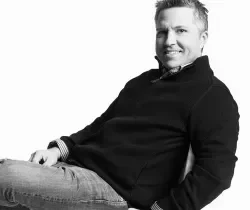Chris Metzger

Chris Metzger is VP of Business Development at FreemanXP where he leads the healthcare team, helping clients deliver messages that impact patients around the world. View more like this on the FreemanXP blog.

Brand experience plays an important role in the healthcare industry — it provides companies that play in the space with the chance to showcase their latest products while interacting with healthcare professionals face-to-face. At the same time, events open attendees’ eyes up to the latest and greatest in healthcare developments, which they can take away and use to inform their patient programs.
Below are five key things to know about this audience segment, which should be considered when creating events that are designed to cater to their needs.
An Educational Experience: Like most people, physicians, and other healthcare professionals attend events because they want to learn. What makes this sector unique is that these attendees are taking time away from their day-to-day roles — which are spent helping others — to find out about the latest tools and technologies which will enable them to enhance others’ quality of life.
This means there should be a focus on the new at these events — the latest products need to be front and center, and seminar programs should be informed by current and emerging industry practices.
Practical Applications: It’s one thing to display a new product or technology — in the case of healthcare events, delegates want to know how these new products can be transformed into patient programs.
I am seeing things like augmented reality (AR) being used to showcase products in a new light, and there is a lot more virtual reality (VR), which offers attendees unique insight into a molecule or mechanism, plus digital touch screens are also on the rise.
A Unique Audience: Given that these delegates head to events to learn about new ways to help their patients, their expectations can be higher — if a physician is taking time to learn, there is a social, economic, and cultural benefit of that — lives are changed by these attendees.
This means we need to take the time out to understand them. Each doctor is different, and no two patients are exactly the same.
The Personalization Piece: This ties in with my previous point. Be sure to consider the different learning styles of attendees — some will prefer a symposium environment or one-on-one engagement, meanwhile others will want to chat over a coffee. It’s about understanding that there are different types of learners and incorporating those idiosyncrasies into the experience design.
Getting the right event staff is also important — professional staff who understand different learning types and can engage different personalities accordingly are always a good idea.
Tactics also need to be reflective of attendees needs in terms of the patients they work with — provide as many opportunities for them to get exactly what they need, by conducting as much pre-event research about your audience and analyzing your outbound data.
Engagement No Matter the Size: It’s not necessarily about having the biggest, tallest, or best-looking exhibition stand — though that can certainly help — as long as brands are smart about an engaging attendee experience. These delegates want to learn new things, and immersive experiences like VR and AR educate them in a new and unique way.
When designing a brand experience for this group, it’s important to remember why they attend events — they want to learn new ways to help their patients. The exhibits, from small to large, should showcase the new, embrace interactive elements, and make it personal for a big impact. A memorable experience is worth sharing and will facilitate attendee learning.

Add new comment